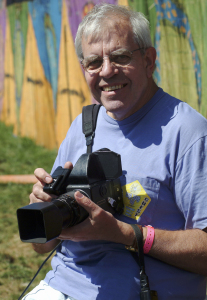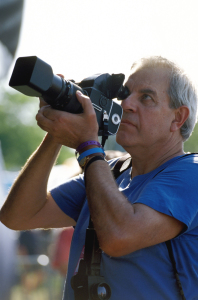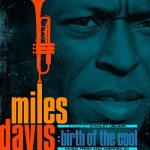
David Redfern, one of the most influential and revered music photographers of his generation, died last month, aged 78, three years into a brave struggle with pancreatic cancer.
In the pantheon of music photographers—and particularly in the uber-hip niche of jazz photography—Redfern ranks as a pioneer. He was, until his passing, the undisputed elder statesman of jazz photography.
Redfern was not only responsible for some of the most memorable and enduring images of the golden era of modern jazz—Miles Davis, Ben Webster, Bill Evans, Duke Ellington, Dizzy Gillespie, Art Blakey, Nina Simone and Louis Armstrong, to name a few—he also took defining images of popular artists like the Beatles, Jimi Hendrix, Frank Sinatra, Sandie Shaw, BB King and John Lee Hooker.
Many of Redfern’s images have already achieved iconic status; many more will achieve that status as the legacy of his archive continues to be unearthed. In Whiplash, for example, an award-winning independent film currently in theaters, Redfern’s image of drummer Buddy Rich, head turned, mouth wide open, hands ablur, is taped to the wall above the young student drummer’s practice kit. The photo is a talisman for the film’s theme of physical and emotional tension in pursuit of the elusive perfection (or imperfection) of jazz genius.
That image, about as close to perfection as a live image of a jazz drummer can be, was taken side stage at Ronnie Scott’s Jazz Club in London in 1969. Redfern had access because he had earned the confidence, respect and friendship of both Ronnie Scott and Buddy Rich. He knew where he needed to stand (seemingly close enough to the horn section to be rubbing shoulders with the trombone player); he had the eye, and patience, to frame the image dramatically; he had the sensitivity to know, and feel, when the moment was just right (no surprise that Dexter Gordon described him as the Cartier-Bresson of jazz); and he had the craft and skill to ensure his exposure was exactly right.
Redfern invites those of us who were not present to feel as if we were, or to imagine what it would have been like to be there; as if Buddy Rich is playing for us, right now, and forever. Redfern manages to achieve this quality of timelessness again and again. His joy with music is not limited to stylish representation. He wants the viewer to cherish the artist’s performance as much as he does.
Many of Redfern’s best black and white images—of Miles Davis, Ben Webster, Bill Evans, Sonny Rollins and Duke Ellington—were important contributions to the stylistic jazz imagery being developed across the Atlantic by Redfern’s contemporaries, William Claxton, William Gottlieb and Herman Leonard. Sadly, all four luminaries have now passed, while their peerless images will continue to inspire current and future generations of photographers.
Highlights of David Redfern’s work
All photographs courtesy of the family of David Redfern
Redfern was an early adopter of color photography, shooting visiting American artists in the well-lit TV studios of the BBC. Good lighting was the secret of the vibrant quality of these early color images in the era prior to fast films and push processing. When he made his first trip to New York in 1967, it was straight to a Herb Alpert television taping where he captured what may end up being his most enduring image: a color image of Louis Armstrong, strategically framed against a bank of lights. This image was chosen by the US Postal Service in 1996 for use as one of ten postage stamps in their jazz series. Three of the ten stamps in that series—Louis Armstrong, Coleman Hawkins and Thelonious Monk—were based on photos of Redfern’s. If ever there was an endorsement of his status as an elder statesman of jazz photography, this was it.
Redfern was, in every way, quintessentially English. He was a tall, affable and engaging gentleman with a moral compass set firmly to social justice. His urbane and outgoing manner oozed a natural charisma. His warmth and sense of humour ran deep. He liked to describe himself as the son of a preacher man (he was), and seemed never to tire of Ronnie Scott’s nightly routine of jokes. He had a seemingly endless repertoire of memorable anecdotes, some of which he shared in his memoir, The Unclosed Eye; others he saved for friends and colleagues, usually over a late-night brandy to mark the end of another day of hard work.

In later years, industry changes caused Redfern to sell his Redferns Music Picture Library to the behemoth of global digital photography, Getty Images. This was no easy decision for Redfern; he was the President of the British Association of Picture Libraries and Agencies from 1989 to 2013 and had watched as smaller agencies like his were progressively swallowed up by industry giants.
Redferns Music Picture Library thrived on reputation and relationships. His was a small, team-based effort with dedicated photographers and a staff that cared deeply about their photography and their relationship with the music industry. In the end, a boutique music library, however popular, could not escape the tidal wave of mergers—“Unfortunately in this photographic digital age,” he said, “it’s adapt or die!”
The proud recipient of the Milt Hinton Award for Excellence in Jazz Photography in 2007 and the Parliamentary Jazz Award for Services to Jazz at the UK Houses of Parliament earlier this year, Redfern has lived his life to the fullest. “This vast scheme of life we have,” he wrote in 2005 “ain’t no rehearsal…As we ride off into the sunset, I’ll quote from the song from the great Louis Armstrong. It’s a wonderful world.”
He is survived by his wife, two ex-wives, three children, five grandchildren and thousands of memorable images.
– Leon Morris
Leon Morris is an award-winning jazz photographer and longtime collaborator with David Redfern.







Be the first to comment!